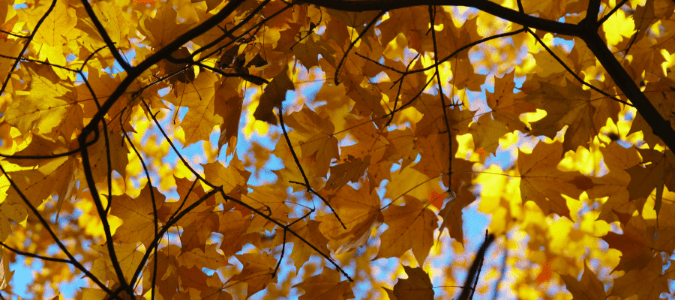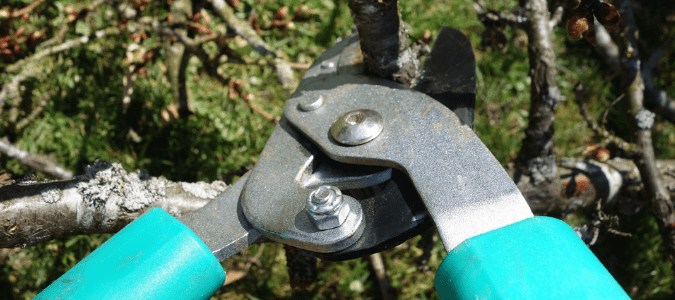
Oak trees are extremely popular here in Texas—and for good reason. Not only are they beautiful, but they also offer shade in the summer and help keep our homes warm in the winter. However, without proper trimming, the branches on these trees can become extremely heavy, posing a risk to your property, your family and your neighbors.
Tree trimming is the process of removing branches that need to be removed immediately and is typically only used when a few branches need to be removed. Examples of this would be a tree branch hanging over a walkway or scraping against your roof. On the other hand, tree pruning usually has a specific goal, such as removing dead or diseased branches, or branches that are rubbing against each other. You can also prune to help boost fruit production or to shape the tree.
To reduce the risk of disease and infection, it is best to trim and prune oak trees between the months of July and January. However, using the right techniques and under the right conditions, a trained arborist can prune your trees outside of these months.
In this post, we’ll discuss best practices for trimming oak trees, as well as other tips on taking care of these towering plants.
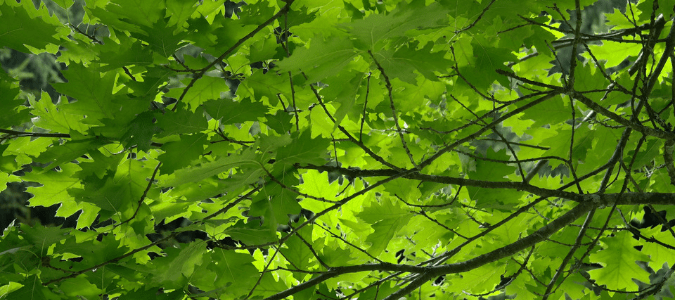
How To Trim Oak Trees
There are many benefits of pruning for healthy plant growth. For example, regularly trimming your oak trees removes dead, diseased and unwanted wood. End-weight reduction, a specialized pruning technique, further removes excessive foliage weight from your oak trees. And, of course, tree trimming enhances a tree’s aesthetic appeal.
Whatever your motivations might be for trimming your trees, it’s best to have a qualified professional do the job. Some companies employ ISA Certified Arborists, who are required to have an academic degree in a related field from a recognized educational institution, who must pass an exam to demonstrate thorough knowledge of arboriculture and have at least three years of related work experience. When pruning isn’t done right, it can compromise the health of an oak so much that the tree might even die.
An experienced arborist will advise you to:
- Always use clean equipment to trim your oaks.
- Make smooth cuts to encourage rapid healing.
- Avoid cutting too close to the trunk, and will also discourage you from leaving an excessively large stub.
- Be careful not to remove more than a third of the canopy as this can easily endanger the health of your tree and therefore should only be done under extreme circumstances.
- Always clean the pruning equipment after pruning one oak and before moving to the next.
- Give your oaks sufficient time to put on new growth and heal from previous pruning cuts before trimming them again (usually a year is sufficient).
Sometimes, however, your trees may need to be trimmed more than once during one year. For example, spring rains may encourage so much new growth that you have safety concerns, such as the risk of heavy branches breaking and falling on people or structures. Such situations may require you to prune your oaks outside of your usual regimen.
Pruning outside of the winter months carries a larger risk of infection, with oak wilt being one of the primary dangers. Because of this, it is highly recommended that any pruning at this time be done by a Texas Oak Wilt Qualified Arborist. These professionals receive special training in how to identify and treat this devastating disease.
Oak Tree Maintenance Tips
Oaks are quite resilient when mature. However, like most other plants, they are still sensitive to our often extreme temperatures, dry conditions and occasional heavy rainfall. Therefore, if you do not take proper care of your oak trees, you risk having your oaks suffer from environmental stress, disease and pest infestations.
Many homeowners aren’t aware of signs of deteriorating tree health or that trees need specialized care to thrive.
The following types of maintenance can keep your oaks healthy:
- Proper watering
- Regular pruning
- Fertilization
- Mulching
- Disease Prevention
Since we’ve already talked about tree trimming, let’s explore each of the other topics in more depth.
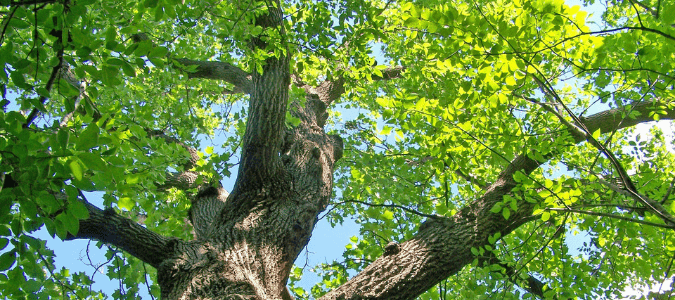
Oak Tree Watering
Drought can damage your valued oak trees. During periods of reduced rain, it’s vital to water these plants regularly. Otherwise, your trees may start growing more slowly, stop growing completely or show other signs of stress.
However, oak tree watering depends on many factors besides drought. Established, mature oak trees have a long tap root that can reach moisture deep in the soil even when moisture levels in the upper layers are low. As such, even though the weather might appear dry, your oak trees might not require supplemental irrigation if they look healthy and their leaves are dense and green.
Nonetheless, if the dry weather has been going on for an extended period, your oaks trees will need to be watered. Which begs the question: what are the best watering methods for oak trees?
Most tree roots are found in the upper 12- to 18-inches of soil. Therefore, whatever watering method you choose, you must provide deep, soaking irrigation that penetrates a soil depth of at least 10 inches. This usually means watering for a longer period of time, rather than more often with shorter duration. Try to avoid watering the area directly around the oak tree trunk. Doing so might expose your trees to root rot. Instead, irrigate the entire area that’s under the canopy, including several feet beyond the tree’s drip line.
While overhead sprinklers are the easiest way to water a large expanse of oak trees, they aren’t water-efficient. In many cases, you will lose too much water due to runoff and surface evaporation. Drip irrigation is far more efficient for oak trees. With drip irrigation, it’s possible to give each tree its own dedicated irrigation valve, which is especially helpful if you need to provide deep watering for multiple trees.
If you have a sprinkler system, you can easily convert it from spray to drip, though you will likely need professional help to do that. Alternatively, you can talk to an expert about the various ways of making your existing sprinkler system more water-efficient. Lastly, a soaker hose can help you provide this moisture to your tree’s root systems.
Fertilization Dos And Dont’s
Most Texas soils are poor, meaning they lack key ingredients trees need to stay healthy. As with other types of lawn maintenance, knowing your soil type will help you determine your nutrient deficiencies. While trees receive “food” through their leaves, fertilizers can benefit from these added nutrients. The best time to fertilize oak trees is typically in the dormant season, which occurs in late fall and into the early spring months. Applying these amendments during the winter allows the tree to store and access these nutrients during the growing season in the spring.
Trees that are growing quickly should be fertilized once a year, while mature trees may only need an application once every three or four years. Newly planted trees should not be fertilized, since excessive fertilization can stunt tree growth and damage a tree. Since fertilizers can burn young plant tissue, apply these nutrients more than a foot away from a young tree stem. Fertilizers are best applied when your lawn is dry. Afterwards, sprinklers can help move these nutrients into your root zone.
Mulching Matters
Mulch can help prevent moisture evaporation, promote healthy growth, prevent weeds and improve the appearance of your trees and lawn. Mulch can be organic or inorganic. Organic mulches, including grass clippings, leaves, compost and bark will eventually decompose, improving your soil quality. As these materials decompose, you must add more.
Apply 2 to 4 inches of mulch in a circle 4 to 6 feet around your oak tree’s base. The further the ring is from a tree’s trunk, the more your tree will benefit, since your tree roots won’t be competing with your grass for water and nutrients. Make sure that mulch does not touch a tree’s base. Instead, start your mulch a few inches away so that the trunk is exposed and air can flow around the base.
Your tree’s roots will be deprived of oxygen if you add more than 4 inches of much around your oak trees. Also, “volcano” mulching is a bad idea—putting mulch in a cone that’s 8 to 12 inches high and 2 feet wide around a tree’s base. This technique creates a moist environment which is prone to pest activity and fungal growth.
Oak Pest And Disease Management
There are several diseases that might affect your oak trees. Oak wilt, as previously mentioned, is a big threat to oak trees in Texas. Oak wilt is a fungal disease that can cause leaf discoloration, wilting trees and even death of your oak. This disease can be spread from tree to tree through their roots or through insects. Also, if you trim one diseased tree then start trimming another without cleaning the shears, the healthy tree can get infected.
Regularly studying foliage changes on your oaks is recommended to help you catch disease and pest problems before they cause irreversible damage. You should also consult a certified arborist as soon as you suspect a disease or pest.
Texas Oak Tree Basics
If you are planning on purchasing an oak tree, the first thing that you need to know is that they are generally slow-growing trees. This is important to understand because you’re not going to plant an oak and have a large, gorgeous-looking specimen in just a few years. These huge plants require love, care and quite a bit of time to reach maturity.
Because of this, many homeowners and property developers in our state overlook them and go for faster-growing shade trees. However, most of these fast-growing trees are often short-lived. They die out in a few years and removing them can be a considerable expense.
As such, oaks are still a very attractive landscaping component in Texas if you’re willing to put in the time. Many homeowners enjoy the lasting beauty and wonderful shade offered by the various types of oak trees out there, as well as their relatively low maintenance requirements.
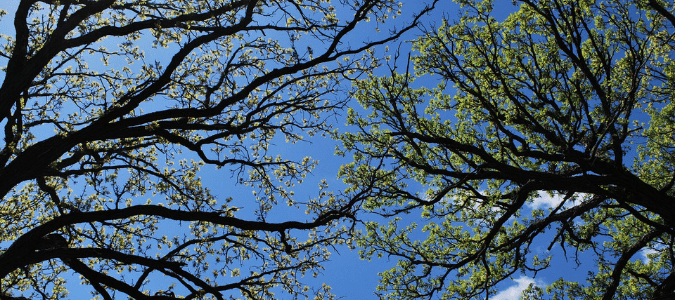
Types Of Oak Trees In Texas
There are several different types of Texas oak trees that you may want to consider for your outdoor spaces.
The Live Oak
As you might have guessed from its name, the live oak is an evergreen oak—it’s “live” all year round. Live oaks often bring to mind huge, iconic trees draped in Spanish moss. The leaves of live oaks are short and skinny, and their oblong-shaped acorns are dark brown in color. Their long, thick limbs can grow to a height of up to 50 feet and spread out to as much as 100 feet in all directions.
These qualities, coupled with their evergreen nature, make live oaks quite effective privacy screens and windbreakers on large properties. They also tend to grow quite well in the sandy soils of Texas.
The Bur Oak
The majestic bur, also known as the prairie oak, is predominantly native to the grassland prairies of west and central Texas. However, being one of the most drought-resistant oaks, this tree is adaptable to most parts of the state. Bur oaks have elliptical leaves that have 5 to 7 rounded lobes. Their acorns are covered at least halfway by the acorn cap, and there’s usually a fuzzy fringe where the cap meets the nut.
Given that bur oak grows faster than most other oak trees, they’re quite a popular shade tree. Under ideal conditions, burs can achieve growth rates of up to three feet a year.
The Shumard Red Oak
It’s hard to beat the Shumard for fall color. Also known as the swamp red oak, their brilliant reddish-orange fall colors come in November and December, with some trees holding their leaves up to January. Shumard oaks are some of the largest southern red oaks. They can grow to heights of up to 120 feet and spread out up to 50 feet wide. Their leaves are deeply indented with 5 to 9 lobes. The acorn cap covers up to one-third of the oblong-shaped acorn.
Additionally, Shumard oaks are drought-tolerant and long-lived. These trees are often part of urban landscapes and can be seen on a number of city streets in the state.
ABC Can Keep Your Landscape Well-Maintained
While watering and mulching are fairly straightforward, tree trimming can be a time-intensive, potentially dangerous project often best left to the experts. The certified arborists at ABC Home & Commercial Services have the tools and knowledge to plant and maintain healthy oak trees for you. We can provide you with regular maintenance and do any tree trimming that you require. With ABC’s help, you can enjoy the natural beauty of these giant trees on your property without having to worry about the upkeep.
